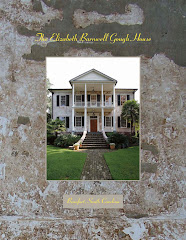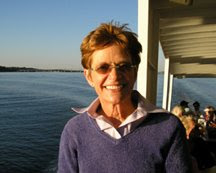
The eldest of five children and only surviving son of General John Barnwell, John Gibbes Barnwell was born February 1778, the year his father was first elected to the State Senate.
According to family lore, when he was only sixteen his father put his capabilities as a planter to a test on the General’s 2000-acre Coosaw Island plantation, promising his son the plantation if he proved successful.
He proved a more than competent planter and Coosaw Island soon became his. By the 1820s, his holdings included his principle plantation on Coosaw Island, part of Parris Island, the Retreat Plantation, a plantation on the northern end of Port Royal called Roupelmonde as well as two more plantations. He also bought the Elizabeth Barnwell Gough House, a purchase that would keep the two-story tabby mansion in the Barnwell family until the turn of the century.
John Gibbes Barnwell along with (later General) Stephen Elliot, John Fripp, E.M. Capers and Dr. D.W. Jenkins also owned a small island off St. Helena Island that the men used as a hunting preserve. The practice was continued by their heirs, ultimately giving the island the name it has today -- Hunting Island. According to his hunting partner Stephen Elliot, John Gibbes Barnwell had his share of the Barnwell spirit. A daredevil, he is said to have made a practice of diving under water to pull alligators from their lairs.Also independent minded like so many of his family, John Gibbes Barnwell flouted the law by teaching a slave named Venture to read, write and do simple arithmetic eventually making him the sole manager of one of his plantations.
Like many of the Barnwells, John was tall, 6’2”, and possessed of the Barnwell family good looks, but unlike his father and Uncle Robert, he was not active politically. The Barnwell family’s interest in politics appears to have skipped generations, with Gen. John and Senator Robert emulating their grandfather Tuscarora Jack and John Gibbes Barnwell following in the footsteps of his grandfather Nathaniel. Like his grandfather, he devoted his energies more to his holdings. The only exception was during the War of 1812.
During the war, he served in the First Regiment of Militia in Beaufort, making the rank of Captain of Company B. John, like Beaufort, though, saw little action. There was a brief blockade of St. Helena Sound by two British armed brigs, the HMS Mosell and HMS Calabri, before a hurricane drove them out to sea, sinking one. At Sen. Robert Barnwell’s urging Fort Marion was built for the defense of Beaufort on Spanish Point at the site of Revolutionary War Fort Lyttelton. The greatest effect of the war was a boom economy brought on by the troops stationed in the town and the highest prices for sea island cotton for decades to come.
In addition to serving in the militia, John was also on the Board of Beaufort College and a vestryman for St. Helena’s Church. The positions he held, while not especially politically powerful, were indicative of someone of his wealth and family connections. They assured him (if not simply by his wealth and the Barnwell name) a prominent role in three of the most exciting events in the Beaufort in his lifetime: the visit of President James Monroe in 1819, the heady Fourth of July celebration of 1819 and the visit of the Marquis de Lafayette in 1825.
John Gibbes Barnwell by all appearances was blessed in his personal life as well. Like so many of the Barnwells, John married a first cousin, Sarah Bull daughter of General Stephen Bull and Anne Barnwell. Sarah was born December 18, 1782 in Maryland, where the family had been forced to seek safety during the Revolution. John and his wife Sarah had seven children all of whom lived to adulthood. They were:
Eliza Barnwell born 1807
Charlotte Bull Barnwell born 1810
Mary Howe Barnwell born 1812
Sarah Bull Barnwell born 1814
John Gibbes Barnwell born 1816
Anne Bull Barnwell born 1818
Emily Howe Barnwell born 1820
In addition to his own children, John was the guardian of his uncle Senator Robert Barnwell’s four younger children following the Senator’s death in 1814. They were:
Robert Woodward Barnwell born 1801
William Hazzard Wigg Barnwell born 1806
Mary Gibbes Barnwell born 1808
Esther Hutson Barnwell born 1809
The house at 705 Washington was no doubt again a center of youthful Barnwell activity.With the Captain’s death is 1828, his former ward and now son-in-law, Robert Woodward Barnwell became the guardian of John’s younger children. Robert, like his cousin Robert Barnwell Rhett, would in the ensuing decades become one of Beaufort’s leading public figures. A graduate of Beaufort College, Robert Woodward Barnwell continued his studies at Harvard. Elected to Phi Beta Kappa his junior year, he was valedictorian for the class of 1821, a class noted for the exceptional number of graduates who would later attain prominence in their respective fields – including Ralph Waldo Emerson, who was to remain a lifelong friend of Robert’s. Elected to the 21st and 22nd U.S. Congress and appointed interim US Senator in 1850, he was an early champion of Nullification. Originally opposed to secession, he changed his position after the election of Lincoln and was one of the framers of the Confederate Constitution. He declined Jefferson Davis’ offer of the position of Secretary of State for the Confederacy, but served in the Confederate Senate throughout its brief existence, representing South Carolina.
During his early career he was also elected 3rd President of South Carolina College and was responsible for significantly expanding its enrollment and facilities, which included the creation of a library that was considered one of the top two in the South, surpassing the libraries of Princeton and Columbia Universities.While his cousin and early law partner, Robert Barnwell Rhett, was known as a “fire eater,” Robert Woodward Barnwell was admired for his modesty, kindness and fine mind. Not the least of his accomplishments during his lifetime was his role in rearing his and wife Eliza’s thirteen children in additon to serving as guardian to his wife’s younger siblings upon the death of her father.
In the close knit extended Barnwell family, the two branches would be particularly intertwined, with Robert Woodward Barnwell and Eliza giving several of their children the same names as other family members. They were:
John Gibbes Barnwell born 1831 (named for Eliza’s father and brother)
William Hazzard Wigg Barnwell 1836 (named for Robert’s brother)
Sarah Bull Barnwell born in 1840 (named for Eliza’s mother and third sister)
Charlotte Bull Barnwell born 1848 (named for first Eliza’s sister)
Emily Howe Barnwell born 1850 (named for Eliza’s fifth and youngest sister)
Captain John Gibbes Barnwell’s son, (later Major) John Gibbes Barnwell followed the same practice, naming one son John Gibbes Barnwell in 1839 and another Robert Woodward Barnwell in 1849 – the intention of honoring family members ultimately creating a veritable genealogical Gordian Knot in the Barnwell family tree.
After Captain John’s death in 1828, his widow Sarah continued to live in their Beaufort home until the arrival of the Union armada in Port Royal Sound signaled the end of an era for Beaufort and the house at 705 Washington. At the age of 79 and infirm, the widow Sarah and daughters Sarah and Emily were part of the 1861 evacuation of Beaufort.Sarah died the following year while in exile in Walterboro. Four of her grandsons serving in the Beaufort Artillery escorted her body to Sheldon Churchyard where she was buried alongside her parents.
After the Civil War, her daughter Emily reportedly sold her diamond ring in order to have her mother reburied along side her husband in St. Helena’s Churchyard.
Please note that the material in this blog is copyrighted. It is not to be reproduced without my specific written permission.
.jpg)
